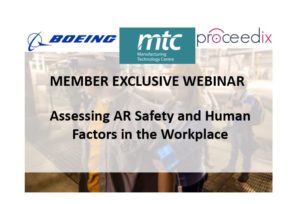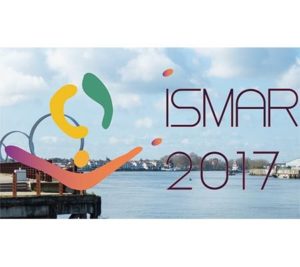Learn more

Webinars
The AREA Research Committee regularly hosts webinars about research topics and trends.
Member-exclusive webinars available are (more recent at the top):
- AREA Research Committee Webinar – Introducing FindAR Literature Search
- AREA Research Committee Webinar – European Union ARtwin Project
- AREA Research Committee Webinar – 3D Asset Use in Enterprise AR Research Project Report
- AREA Research Committee Webinar – Web based AR in Enterprise Research Project Report
- AREA Research Committee Webinar – Barriers to AR Adoption in Manufacturing
- Research Committee webinar with Dr. Steven Feiner of Columbia University
- AREA Research Committee webinar: Barriers to AR Adoption in Manufacturing
- Members Research Project Results: EPRI and Boeing
- How to assess safety and human factor risks in your AR project
- Members Research Project Results: AMRC and Huawei
- ROI Deep Dive
- Research Committee’s Safety and Human Factors Risks Webinar
Publicly available webinars are currently (more recent at the top):
- AREA Research Committee Webinar Research on Impacts of Light Emitted by AR Displays @ CIOP-PIB
- AREA Research Committee Webinar – Sensing Human Gestures from the Future Interfaces Group @Cargenie
- AREA Research Committee – 3D Asset Use in Enterprise AR Research Project Report
- AREA Research Committee – European Union ARtwin Project
- AREA Research Committee – Mixed AR User Experience Evaluation Methods
- AREA Research Committee Webinar Estimating Enterprise AR ROI using AREA’s On line Calculator
- AREA Research Committee Webinar – PTC Reality Lab Overview and Projects
- AREA Research Committee Webinar – Light Anchors and the Future Interfaces Group @ Carnegie Mellon University
- AREA Research Committee Webinar – CES 202 Round-Up with an Enterprise AR Twist
- AREA Research Committee Webinar – W3C Immersive Web WG and the Future of Web-based AR
- How Public Private Partnerships Conduct Research on AR in Manufacturing
- AREA Research Committee Webinar – Enterprise AR Interoperability and Standards
- Merging IoT, AI and AR: Foundations, Drivers, Challenges and Recommendations
- Current AR Research Projects with Dr. Rafael Radkowski, Iowa State University
- How AR impacts your company’s bottom line
- Developing AR and VR for Public Safety with Scott Ledgerwood of NIST
Ongoing initiatives
The AREA Research Committee is supporting members and the enterprise AR ecosystem through the following initiatives:
- AREA-directed Research Projects
- Human Factors Interest Group
- Best Practices in Enterprise AR Research
- AREA Enterprise AR Research Agenda
The AREA Enterprise AR Research Agenda guides and provides recommended topics for research funding/grant organizations of all sizes as well as researchers worldwide in their investment of resources into research that will accelerate the adoption of AR in enterprise settings. It is made publicly available by the AREA in order to support all members of the enterprise AR ecosystem.
Research Suppliers
The AREA Research Committee is pleased to have the opportunity to work with the following research organizations:
- Brainwaive LLC on the Wearable AR security project
- Strategy Analytics on the Measuring AR ROI project
- The Manufacturing Technology Centre on the Safety and Human Factors project
- xReality Lab @ Universität der Bundeswehr on the AR Adoption in Manufacturing project
- Saverio Romeo, Visiting Fellow at the Centre for Innovation Management Research, Birbeck, University of London
If you’d like to talk to us about the Research Committee or require additional information, please reach out to Christine Perey.

